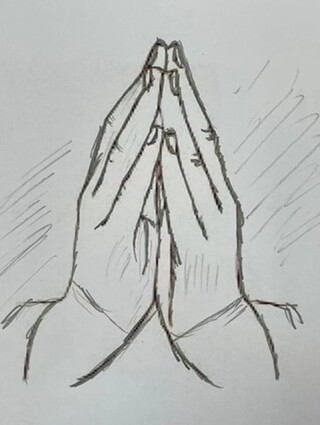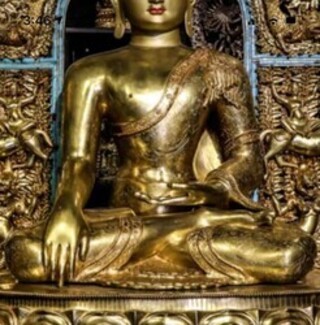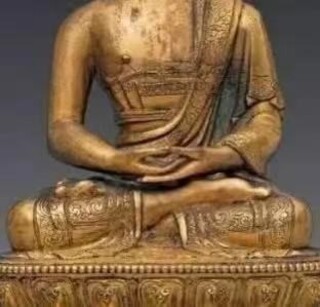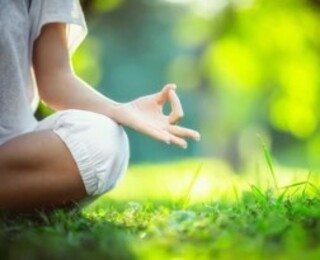Mudra for meditation
Mudra for meditation
Mudras are widely used in various spiritual practices, including Buddhism, Taoism, Jainism, Yoga, Tangmi, and Dongmi, and even in ancient Egyptian, Babylonian, and Sumerian cultures. The earliest recorded mudras come from the Vedas in India, where different mudras were used for meditation and contemplation. With over 200 different mudras, the same mudra can have different names and purposes in different sects or even within the same sect in different regions, such as the gesture of prayer commonly seen in India, Thailand, or among Buddhists, which represents bowing, respect, and submission to the divine.You can do an experiment: use the gesture of prayer while sitting in meditation and after a period of time, you will feel a sense of peace and submission to the universe. So, if you feel angry about something, you can use this mudra to focus your attention on your heart chakra, and soon a sense of peaceful and gentle energy will envelop you. After meditation, you can look at things from a different perspective. Remember, meditation is not about suppressing emotions, it is about not identifying with them. Once you identify with emotions, they will drag you along. You are an observer, acknowledging their existence but not identifying with them. Often, emotions are like clouds slowly drifting away, and at that moment, you can see things from different angles and even look inward to see if your biases or beliefs have caused misunderstandings. Only then can you make wiser judgments.
There are over 100 types of mudras, and this article cannot introduce them all. However, we can introduce several commonly used mudras:
Gesture of prayer
Place your palms together in front of your chest and focus your attention lightly on your heart chakra. Breathe in through your nose, and visualize a white light in your heart chakra expanding slowly until it encompasses your entire body. You will feel a peaceful and serene energy enveloping you.
Demon-subduing mudra
When Shakyamuni Buddha was meditating under the Bodhi tree, He vowed not to rise from meditation until He attained Buddhahood. When His consciousness reached its highest point, the accumulated subconscious also surfaced. Thus, the Buddha was confronted by armies of demons (fears), beautiful women (desires), and more.
Shakyamuni Buddha clearly understood that these were projections of His inner subconscious, but their impact was tremendous. He used the demon-subduing mudra to connect with the earth and remain motionless. These projections were like clouds that could not last long unless you took them seriously and rejected or resisted them, which would strengthen their existence. In the end, these projections dissipated without harming the Buddha.
Everything is created by the mind, and the so-called demons are inner demons, the accumulated subconscious of past lives. The demon-subduing mudra subdues your inner demons, your own dualistic attachments of greed and ignorance. When your mind is preoccupied with thoughts of right and wrong, etc., you can use this mudra to connect with the earth and the universe and absorb energy into yourself. Ignore the voice in your head; you and the earth are one and the same. The voice will fade away, and you may even feel like sleeping (due to excessive brain activity entering alpha or delta waves). At this point, depending on the situation, you can continue to meditate or go to sleep.
Mudra of Zen
Many people use the meditation mudra most often to enter a state of concentration. There are many ways to sit in meditation, and personally, I think the meditation mudra is more suitable for simple counting breaths, the Taoist practice of focusing on the lower abdomen, or concentrating on a single chakra or consciousness. The body must be relaxed but aware. Students often ask what relaxed awareness means, and it's like driving a car. You can't grip the steering wheel tightly, but you need to be relaxed and aware of the road conditions. Gradually, you will enter a state of concentration. Regardless of what thoughts are in your mind, just observe them without engaging with them. Energy will flow naturally through this meditation mudra, and circulate throughout your body. Your consciousness exists in a vast space, even in the entire universe.
Mudra of consciousness
Place your thumb and index finger together in a relaxed way and keep your gaze forward, whether you're meditating or simply sitting. I really like this mudra, especially after a long day at work or when feeling stressed. By holding this mudra in a relaxed way, you can gradually calm your mind and soul. This mudra is believed to invite higher consciousness to calm the mind and thoughts, and you don't need to deliberately invoke it; just sit down and hold this mudra in a relaxed way. You can also reverse this mudra to gather your consciousness into your body and repair your mind and body.Note that this mudra has a great effect on stress reduction, but it's ineffective if you hold this mudra while working at the same time.

Hand gestures have been passed down for over 8,000 years and many of them still exist today. Some schools even use hand gestures for healing purposes, such as pain relief mudra, physiology mudra, navel chakra mudra, downward mudra, and so on. However, it's important to remember that many illnesses are also created by consciousness. If you're interested, there are many books that introduce these hand gestures that you can refer to.
More reading
- Top 10 Meditation Chairs in the World Reviews
- Top 10 Meditation Course Reviews
- Top 10 Meditation Cushion Brands Review